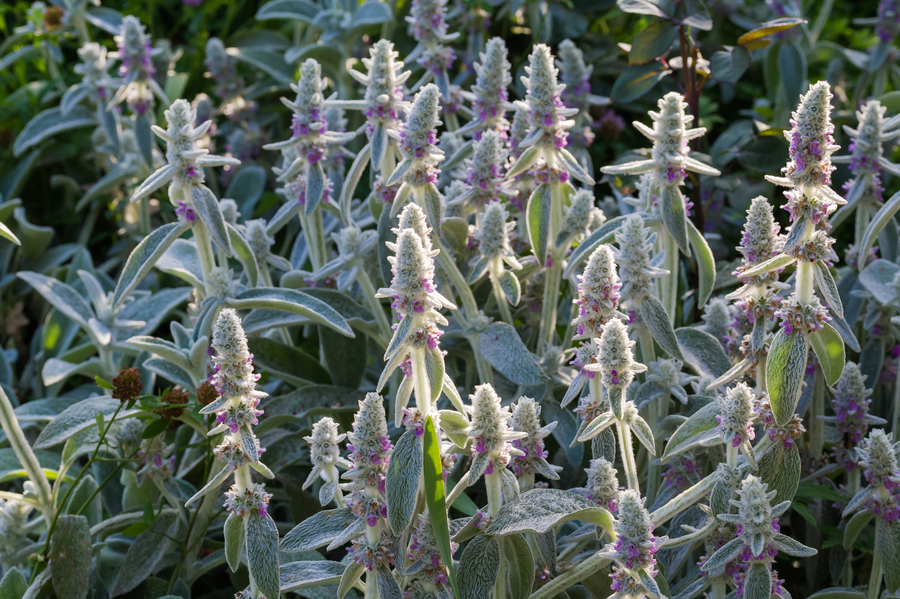Whether you are looking for lady’s mantle or lady’s tresses or whatever other popular flowers that start with L, this article has you covered.
I’ve curated a list that includes beloved flowers like the lily and lavender as well as some unique choices like lady’s slipper. Let’s dig right in with this list of 22 types of flowers that start with the letter L.
List of Flowers that Start with L
- Ladybells (Adenophora liliifolia)
- Lady’s mantle (Alchemilla mollis)
- Lady’s slipper (Cypripedium kentuckiense)
- Lady’s tresses (Spiranthes ordata)
- Lance-leaf coreopsis (Coreopsis lancelolata)
- Lantana (Lantana camara)
- Larkspur (Delphinium elatum)
- Lavender (Lavandula angustifolia)
- Licorice plant (Helichrysum petiolare)
- Lilac (Syringa spp.)
- Lily (Lilium spp.)
- Lily of the valley (Convallaria majalis)
- Lemon balm (Melissa officinalis)
- Lenten rose (Helleborus orientalis)
- Leopard plant (Ligularia dentata)
- Lobelia (Lobelia erinus)
- Loosestrife (Lysimachia punctata)
- Lords and ladies (Arum italicum)
- Love-in-a-mist (Nigella damascena)
- Love-lies-bleeding (Amaranthus caudatus)
- Lungwort (Pulmonaria officinalis)
- Lupine (Lupinus x hybrida)
1. Ladybells (Adenophora liliifolia)
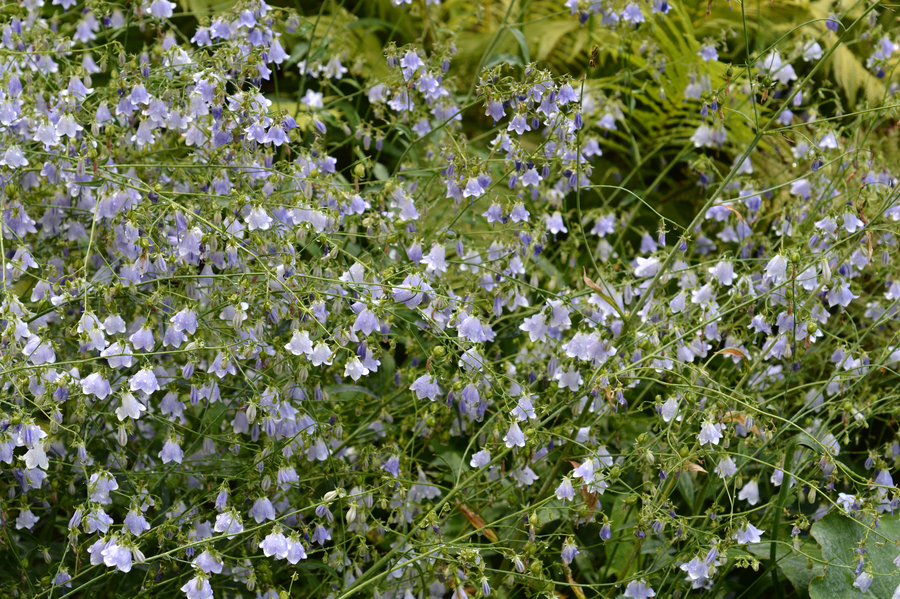
Ladybells have dramatic, bell-shaped flowers that drape. They are a popular plant ideal in many types of gardens. In addition to being one of the more loved flowers that start with L, they also attract beneficial insects.
- Type: Herbaceous perennial
- Water: Average
- Bloom Color: Purple
- Hardiness Zone(s): 3 to 9
- Bloom Time: Late spring
- Mature Height (inches): 18 to 24
- Exposure: Full sun to part shade
- Uses: Borders and containers
2. Lady’s mantle (Alchemilla mollis)
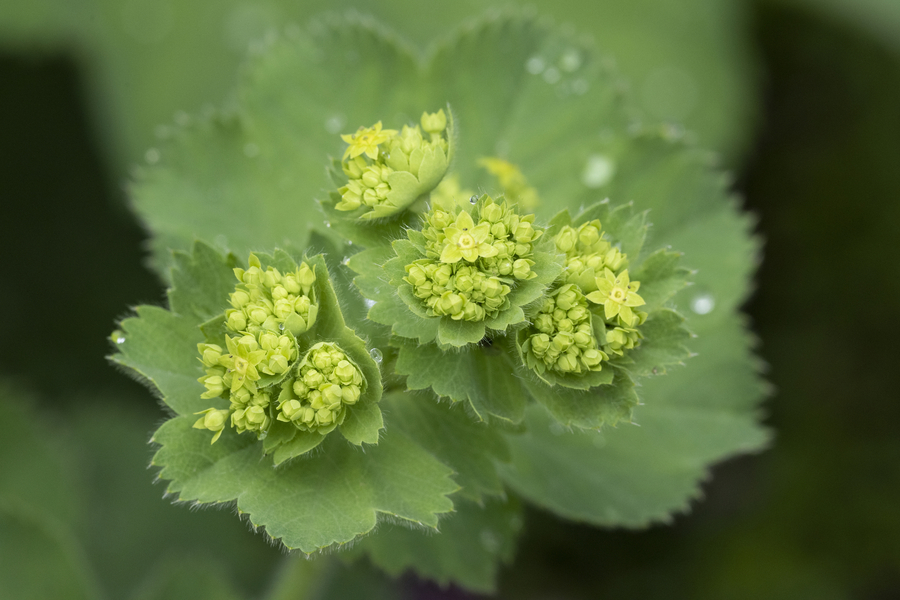
Lady’s mantle is most often grown for its unique foliage. It has wide, round leaves that are soft to the touch. It is native to mountainous regions in Europe and makes an excellent cottage garden plant.
- Type: Herbaceous perennial
- Water: Average
- Bloom Color: Yellow
- Hardiness Zone(s): 3 to 8
- Bloom Time: Summer
- Mature Height (inches): 12 to 18
- Exposure: Full sun to part shade
- Uses: Borders, edges, and groundcover
3. Lady’s slipper (Cypripedium kentuckiense)
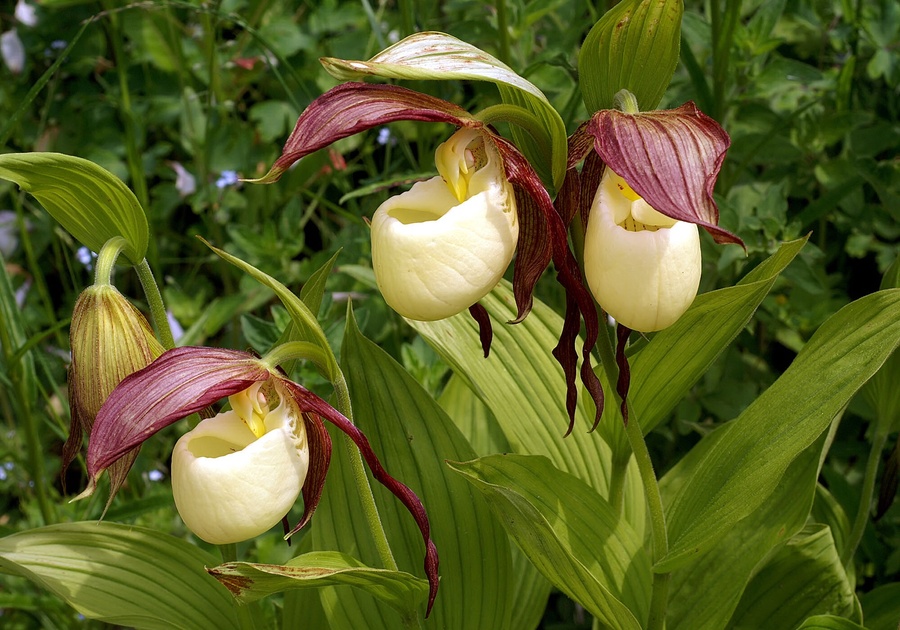
Perhaps one of the rarest flowers that starts with L, the lady’s slipper is a terrestrial orchid that is difficult to find in nurseries. They are native to the eastern U.S. and are an endangered woodland plant.
- Type: Orchid
- Water: Average to moist
- Bloom Color: Cream with purple
- Hardiness Zone(s): 3 to 8
- Bloom Time: Spring into early summer
- Mature Height (inches): 18 to 24
- Exposure: Part shade to full shade
- Uses: Woodland gardens and shaded parts of the garden
4. Lady’s tresses (Spiranthes ordata)
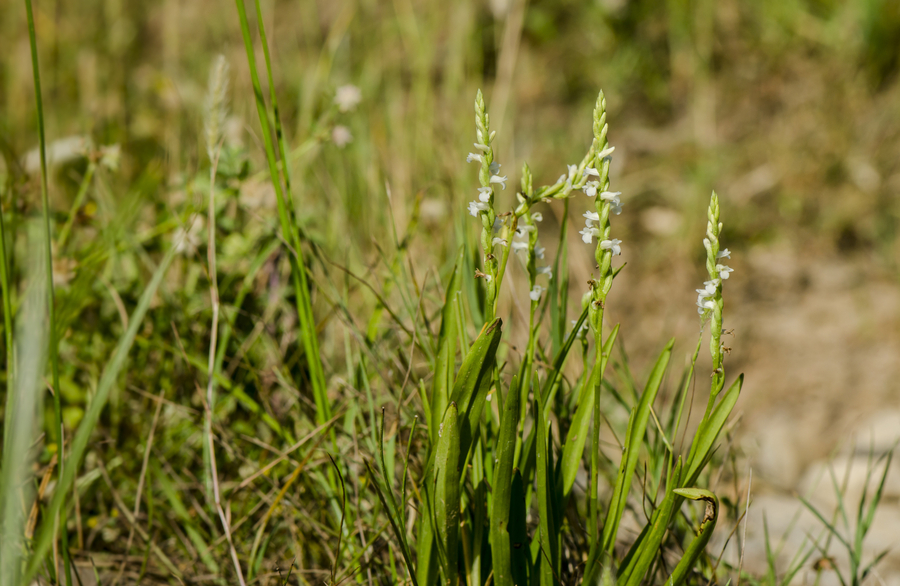
Lady’s tresses are fragrant flowers that typically grow in marshes, bogs, and swamps. They get their name for their resemblance to women’s bloomers during colonial times. They are native to the US and can add dimension to any garden.
- Type: Herbaceous perennial
- Water: Moist to wet
- Bloom Color: White
- Hardiness Zone(s): 5 to 9
- Bloom Time: Late summer to fall
- Mature Height (inches): 8 to 24
- Exposure: Part shade
- Uses: Damp meadows, woodlands, moist slopes, waters edge, and water gardens
5. Lanceleaf coreopsis (Coreopsis lancelolata)
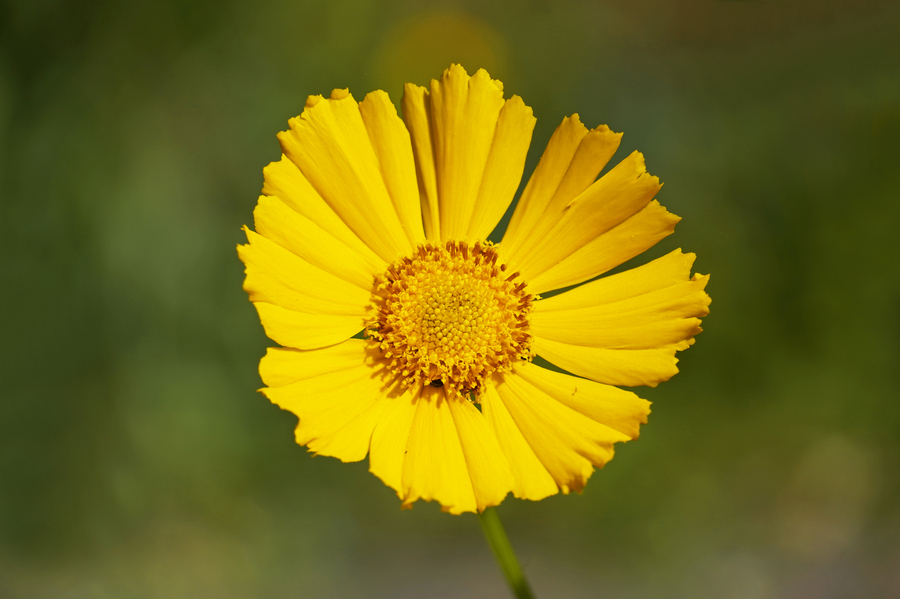
This pollinator-friendly plant tolerates drought and shallow soil. It can be deadheaded to increase blooming and has a lengthy blooming season. It self-seeds freely but should be divided every three years to encourage blooming.
- Type: Herbaceous perennial
- Water: Dry to average
- Bloom Color: Yellow
- Hardiness Zone(s): 4 to 9
- Bloom Time: Summer
- Mature Height (inches): 12 to 24
- Exposure: Full sun
- Uses: Wildflower gardens, meadows, and rock gardens
6. Lantana (Lantana camara)
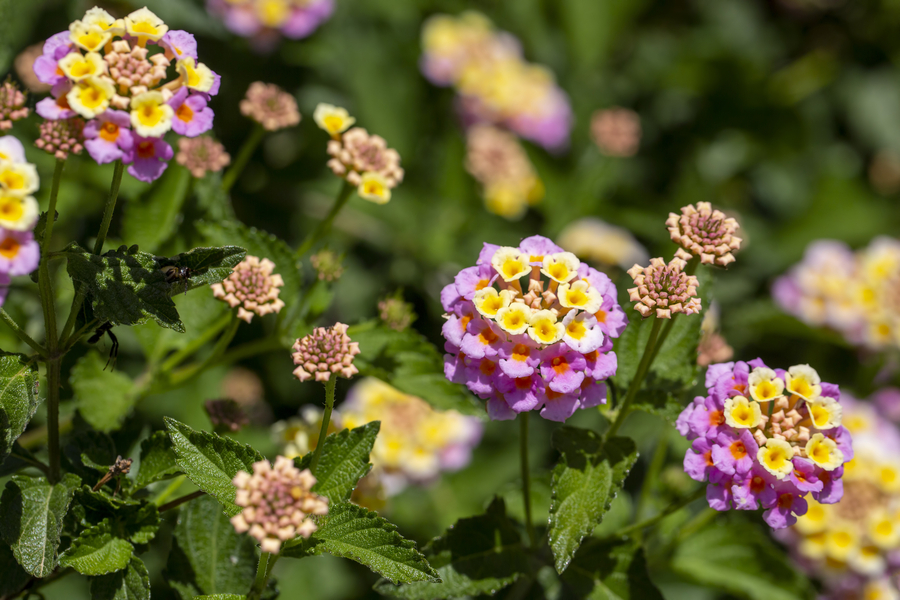
While the lantana is a perennial in only two zones, gardeners in cooler zones can grow it as an annual. Though it is pollinator-friendly and its flowers are beautiful, it is considered invasive. Growing it in a container is recommended to prevent spreading.
- Type: Broadleaf evergreen shrub
- Water: Average
- Bloom Color: White, yellow, orange, red, and purple
- Hardiness Zone(s): 10 to 11
- Bloom Time: Summer to fall
- Mature Height (feet): 3 to 4
- Exposure: Full sun
- Uses: Borders, containers, or as an indoor plant
7. Larkspur (Delphinium elatum)
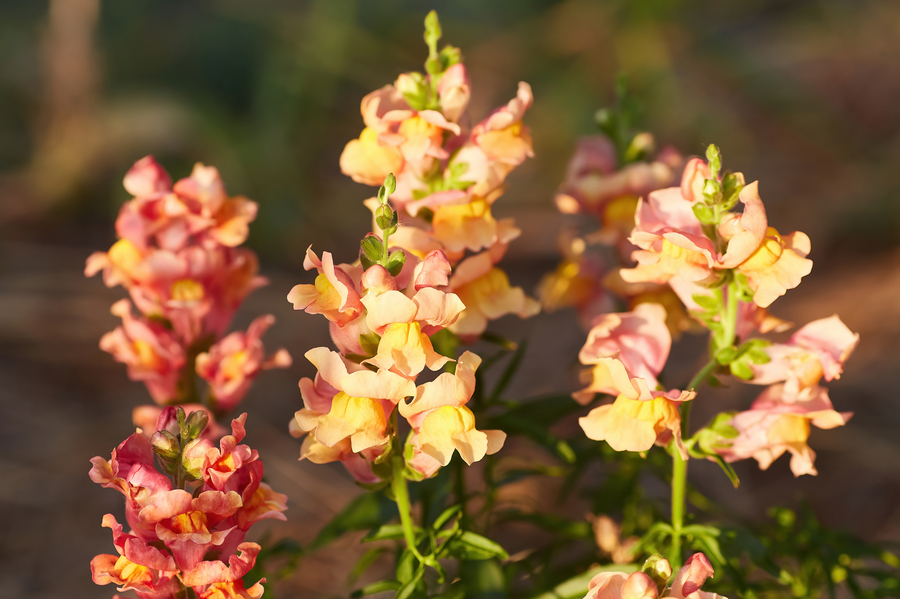
The larkspur is loved by hummingbirds and butterflies. Because of its dramatic flowers, it is ideal for cottage gardens. Deadheading encourages subsequent blooming, and it is best planted near supports like fences so it does not fall in the wind.
- Type: Herbaceous perennial
- Water: Average
- Bloom Color: Blue
- Hardiness Zone(s): 3 to 7
- Bloom Time: Summer
- Mature Height (feet): 3 to 5
- Exposure: Full sun
- Uses: Borders and backgrounds
8. Lavender (Lavandula angustifolia)
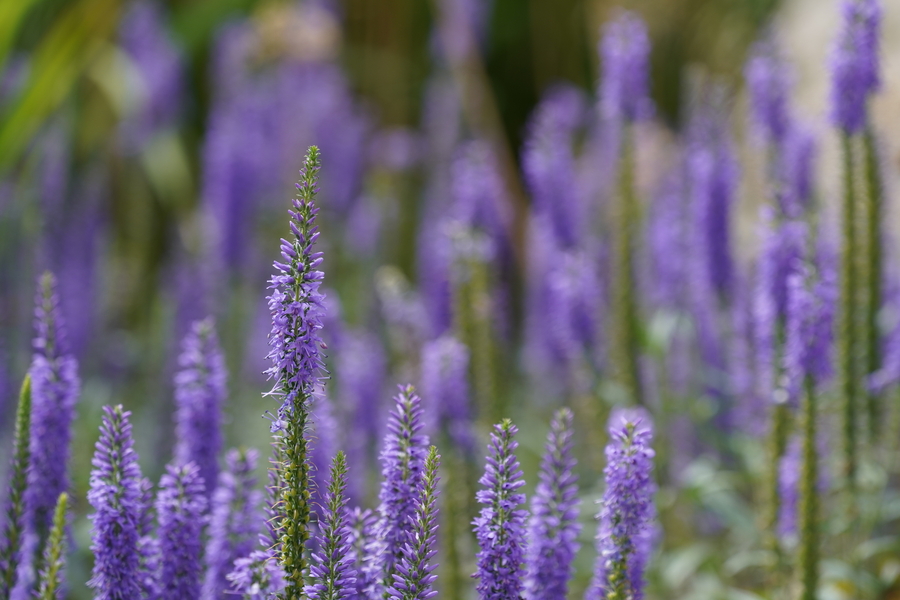
Lavender is one of the most popular flowers that start with L. It grows best in dry conditions and is known for its soothing fragrance. Lavender is one of the most recognizable plants; not in sight but in smell. It makes a good cut flower or gift and its leaves can be used for potpourri.
- Type: Herbaceous perennial
- Water: Dry to average
- Bloom Color: Purple
- Hardiness Zone(s): 5 to 8
- Bloom Time: Summer
- Mature Height (feet): 2 to 3
- Exposure: Full sun
- Uses: Herb gardens, Mediterranean gardens, children’s gardens, and sandy spots in the garden
9. Licorice plant (Helichrysum petiolare)
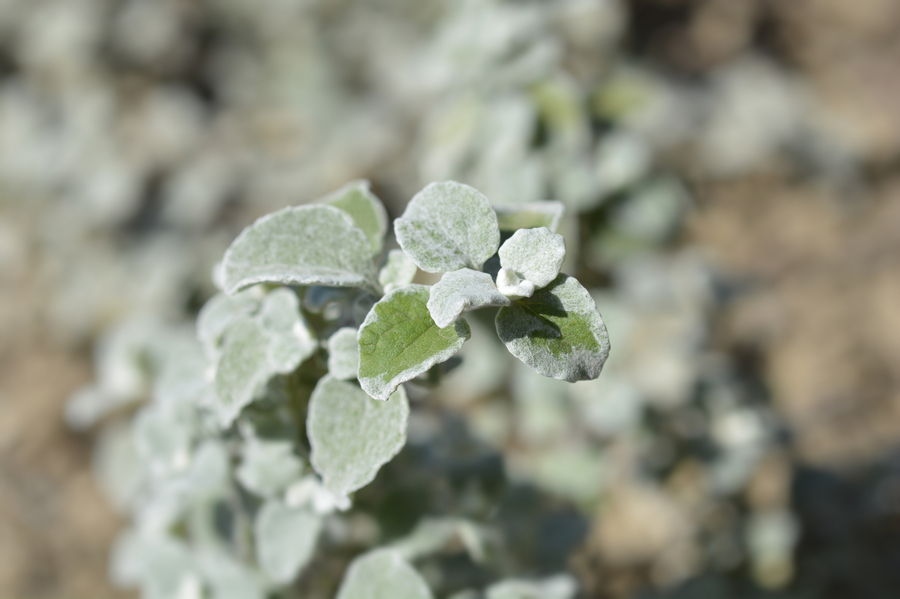
This plant is best grown as an annual and is prized for its silvery foliage. If grown as an annual, its flowers may not show as they take a certain number of warm days to bloom. It makes an excellent container plant with its trailing foliage.
- Type: Herbaceous perennial
- Water: Dry to medium
- Bloom Color: White
- Hardiness Zone(s): 9 to 11
- Bloom Time: Summer (if grown as perennial)
- Mature Height (inches): 6 to 8
- Exposure: Full sun to part shade
- Uses: Groundcover and containers
10. Lilac (Syringa spp.)
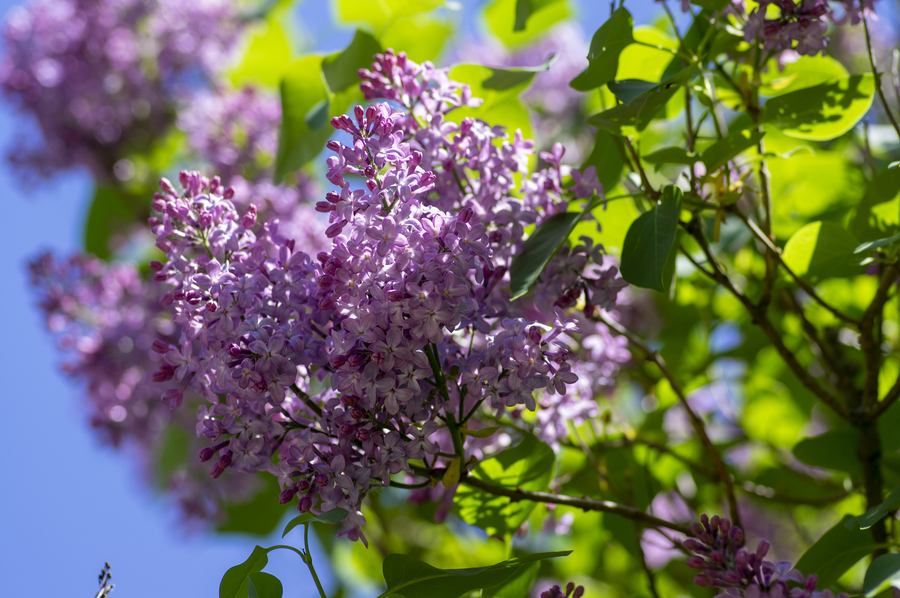
The popular lilac is native to Europe and Asia. It is grown for its showy, fragrant blooms. It can be trimmed to maintain a smaller shape. Lilac attracts hummingbirds and pollinators and can grow in small spaces.
- Type: Deciduous shrub
- Water: Average
- Bloom Color: Pink or purple
- Hardiness Zone(s): 3 to 7
- Bloom Time: Spring
- Mature Height (feet): 4 to 7
- Exposure: Full sun
- Uses: Backgrounds
11. Lily (Lilium spp.)
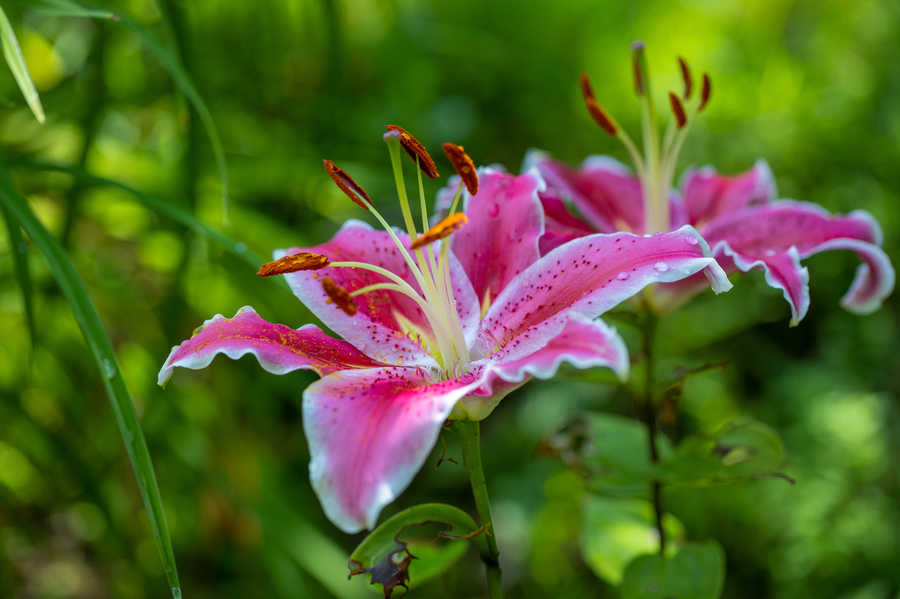
The lily family has a wide range of flowers that start with L – there are over 100 different species! They are one of the most instantly recognizable plants on this list. Many species are easy to grow and are easy to propagate. Lilies are fragrant and make excellent cut flowers.
- Type: Bulb
- Water: Average
- Bloom Color: All colors
- Hardiness Zone(s): 3 to 8
- Bloom Time: Summer
- Mature Height (feet): 1 to 8 (depending on the variety)
- Exposure: Full sun to part shade
- Uses: Borders and backgrounds
12. Lily of the valley (Convallaria majalis)
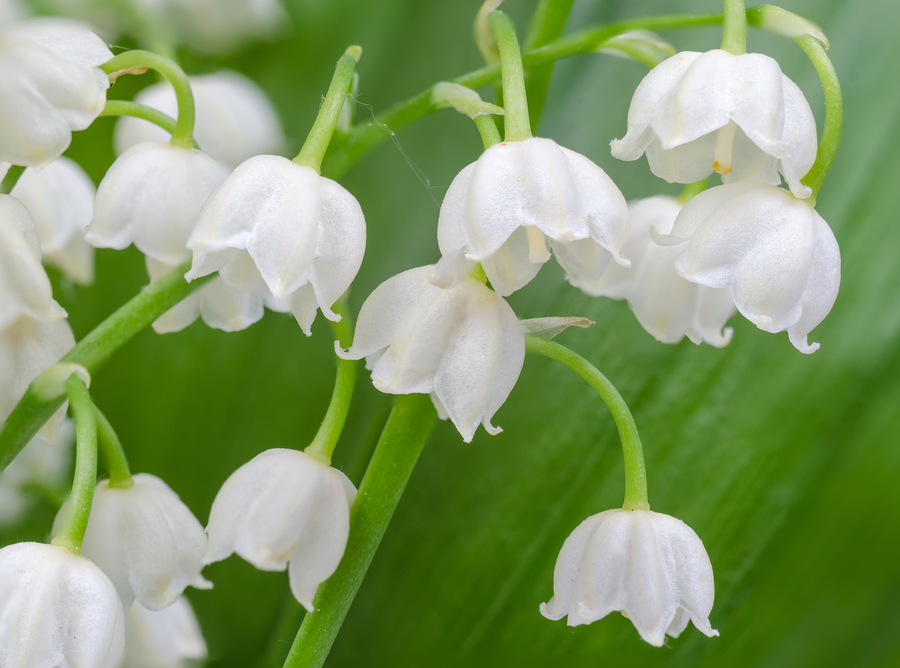
Lily of the valley spreads by rhizome and has the tendency to be aggressive. Nevertheless, it is a beautiful and beloved plant. It is a short grower and does best in the front of flower beds. Its delicate flowers make for ideal cut flowers.
- Type: Herbaceous perennial
- Water: Average
- Bloom Color: White
- Hardiness Zone(s): 3 to 8
- Bloom Time: Mid spring
- Mature Height (inches): 6 to 12
- Exposure: Part shade to full shade
- Uses: Ground cover and shaded parts of the garden.
13. Lemon balm (Melissa officinalis)
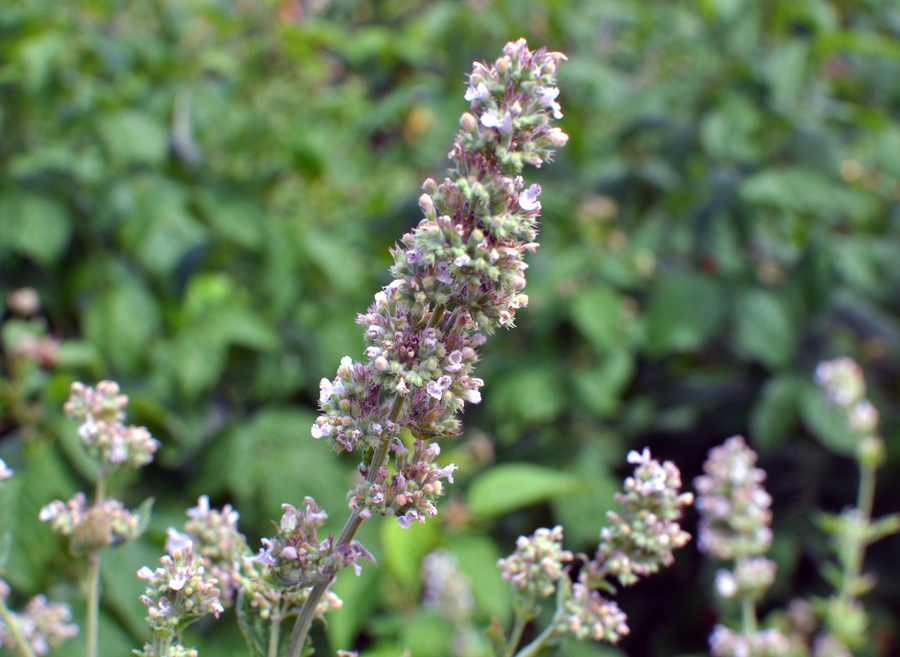
Lemon balm derives its name from its lemon-scented leaves. It is a great choice for herb gardens and borders for its fragrance. Lemon balm has also been praised for its medicinal benefits, making it one of the more versatile flowers that start with L.
- Type: Herbaceous perennial
- Water: Dry to average
- Bloom Color: White, pale yellow
- Hardiness Zone(s): 3 to 7
- Bloom Time: Late summer
- Mature Height (inches): 18 to 24
- Exposure: Full sun to part shade
- Uses: Groundcover, borders, and culinary gardens
14. Lenten rose (Helleborus orientalis)
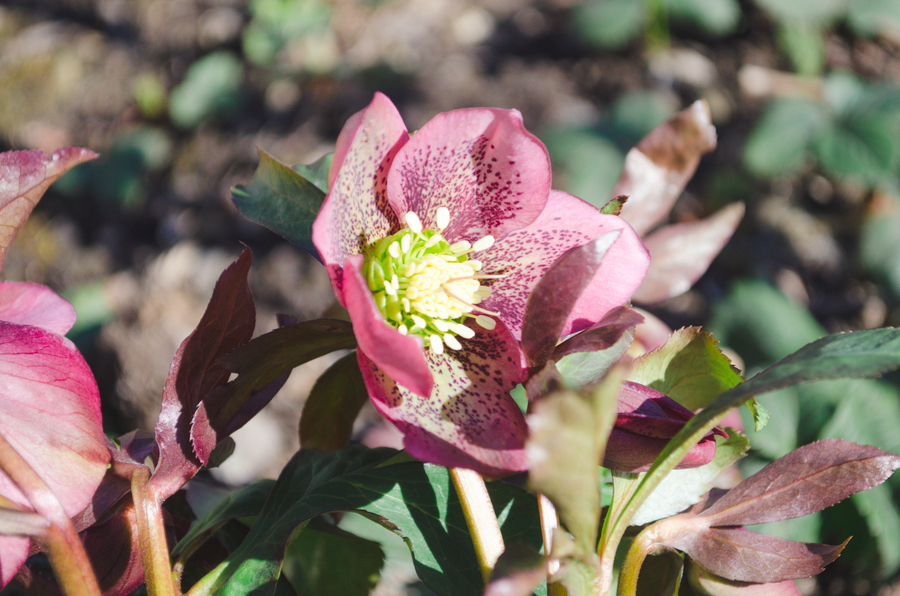
The lenten rose can bring much-needed color to the early days of spring. It is drought and shade tolerant and it self-seeds readily. It makes an excellent addition to alpine or woodland gardens. It may need some winter protection to prevent injury.
- Type: Herbaceous perennial
- Water: Average
- Bloom Color: White, pink, and rose
- Hardiness Zone(s): 4 to 9
- Bloom Time: Spring
- Mature Height (inches): 12 to 18
- Exposure: Part shade to full shade
- Uses: Spring gardens and groundcover
15. Leopard plant (Ligularia dentata)
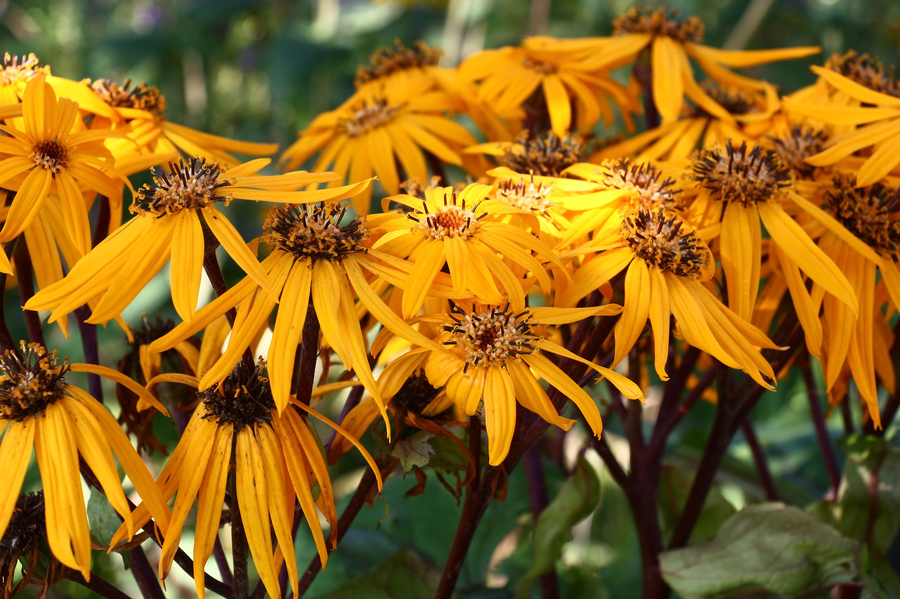
The leopard plant has similar foliage as the lady’s mantle, but it grows much larger. It is grown mostly for its foliage and makes an excellent filler plant. Ideally, it should be grown in heavy shade as too much sun will cause wilt.
- Type: Herbaceous perennial
- Water: Average to wet
- Bloom Color: Yellow
- Hardiness Zone(s): 3 to 8
- Bloom Time: Summer
- Mature Height (feet): 3 to 4
- Exposure: Part shade to full shade
- Uses: Rain gardens, waters edge, and shaded parts of the garden
16. Lobelia (Lobelia erinus)
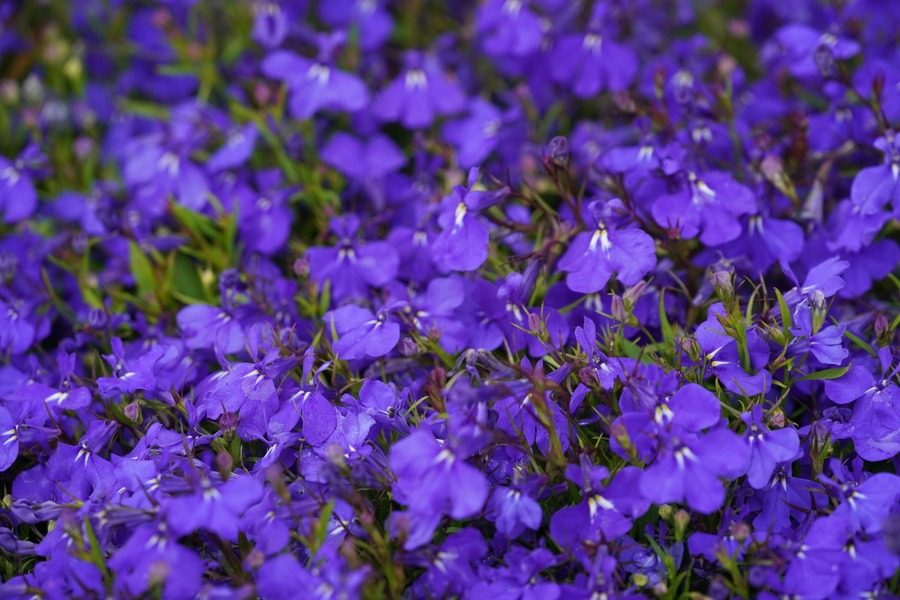
Lobelia is a common flower that grows best in a bright location out of direct sunlight. It can be grown as an annual or an indoor plant in cooler climates. Lobelia has upright or trailing varieties and it grows generous blooms. If you like purple flowers that start with L, Lobelia might be perfect for you.
- Type: Herbaceous perennial
- Water: Average
- Bloom Color: Violet
- Hardiness Zone(s): 10 to 11
- Bloom Time: Summer
- Mature Height (inches): 6 to 8
- Exposure: Full sun to part shade
- Uses: Containers and edging
17. Loosestrife (Lysimachia)
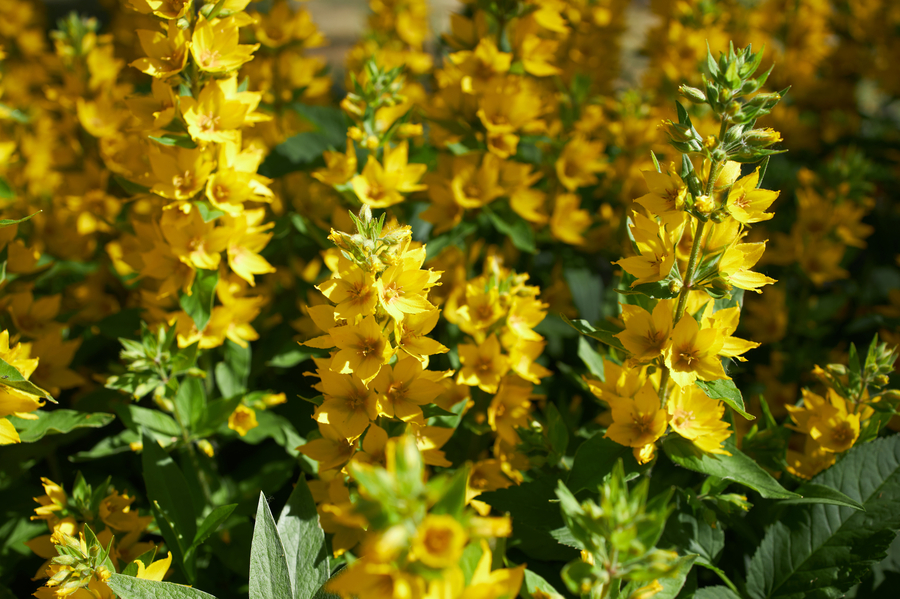
Loosestrife is somewhat wild in nature, it spreads on its own (but not aggressively). It does well when it is given space to roam and form colonies. Its bright, yellow flowers that start with the letter L can add warmth and vibrance to any garden.
- Type: Herbaceous perennial
- Water: Average to wet
- Bloom Color: Bright yellow
- Hardiness Zone(s): 4 to 8
- Bloom Time: Summer
- Mature Height (feet): 2 to 3
- Exposure: Full sun to part shade
- Uses: Cottage gardens, waters edge, and borders
18. Lords and ladies (Arum italicum)
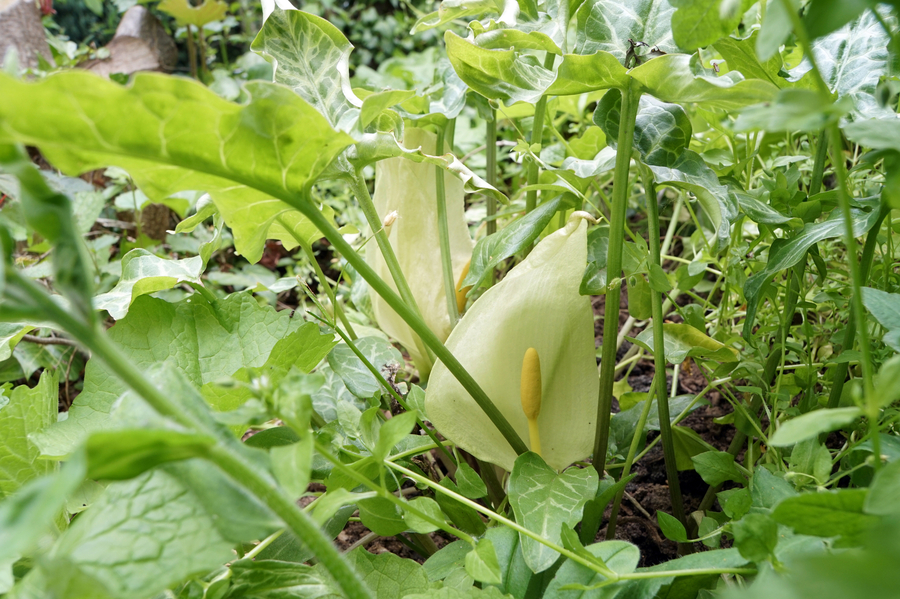
Here’s more uncommon flowers that start with L. Lords and ladies is most often grown for its striking, variegated, rippled foliage. After blooming, this plant develops orange-red berries.
- Type: Herbaceous perennial
- Water: Average
- Bloom Color: Yellow to white
- Hardiness Zone(s): 5 to 9
- Bloom Time: Spring
- Mature Height (inches): 12 to 16
- Exposure: Part shade to full shade
- Uses: Rain gardens, woodlands, and shade gardens
19. Love-in-a-mist (Nigella damascena)
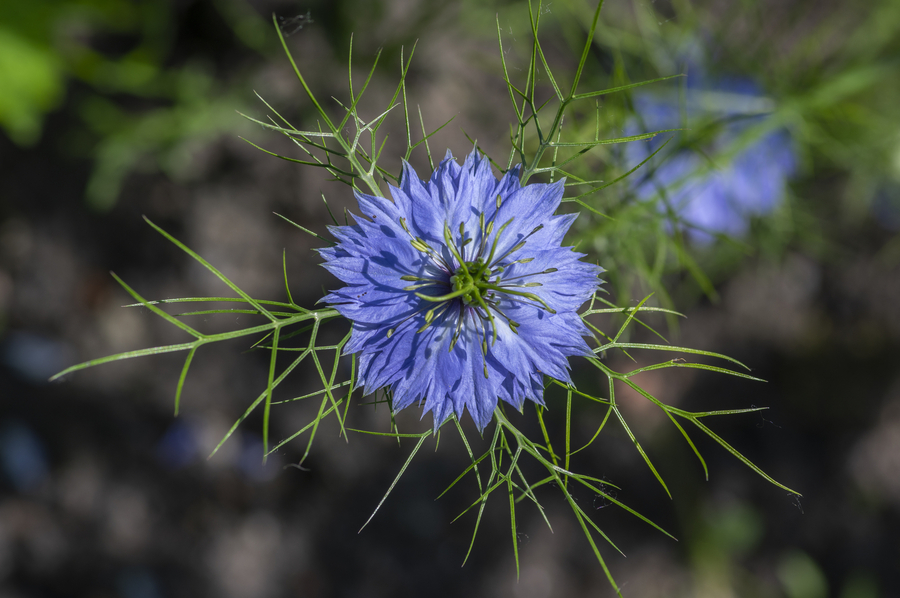
Love-in-a-mist is a unique flower with lacey (or misty) leaves. It grows in many soil conditions, but prefers well-drained soil. It blooms many flowers that can be used in bouquets or in dried arrangements.
- Type: Annual
- Water: Average
- Bloom Color: Blue, white, and pink
- Grow Zone(s): 2 to 11
- Bloom Time: Summer
- Mature Height (inches): 18 to 24
- Exposure: Full sun
- Uses: Borders, cottage gardens, and containers
20. Love-lies-bleeding (Amaranthus caudatus)

Love-lies-bleeding is a favorite among contemporary florists. It has dramatic flowers that start with L and stand out in borders. Because of its trailing flower heads, it makes an excellent container plant. In addition to its beauty, the seeds of this plant are edible.
- Type: Annual
- Water: Average
- Bloom Color: Burgundy
- Grow Zone(s): 2 to 11
- Bloom Time: Midsummer
- Mature Height (feet): 2 to 4
- Exposure: Full sun to part shade
- Uses: Borders and hanging baskets
21. Lungwort (Pulmonaria officinalis)
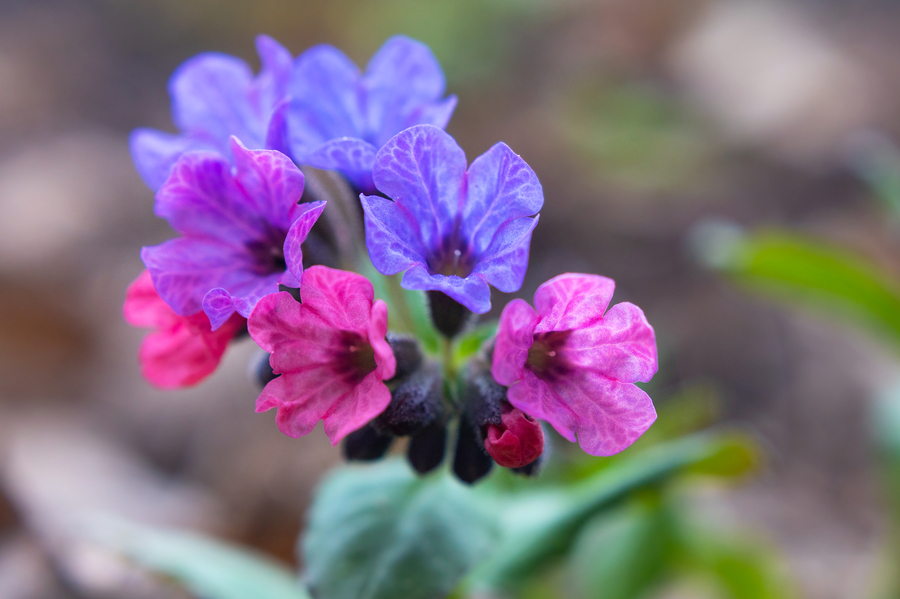
Though lungworts cannot tolerate excessive heat they do make an excellent woodland plant. They spread by their roots but are not invasive. These flowers that start with L are worth planting in your garden!
- Type: Herbaceous perennial
- Water: Average
- Bloom Color: Pink to violet
- Hardiness Zone(s): 3 to 8
- Bloom Time: Spring
- Mature Height (inches): 6 to 12
- Exposure: Part shade to full shade
- Uses: Woodlands and shaded spots in the garden
22. Lupine (Lupinus x hybrida)
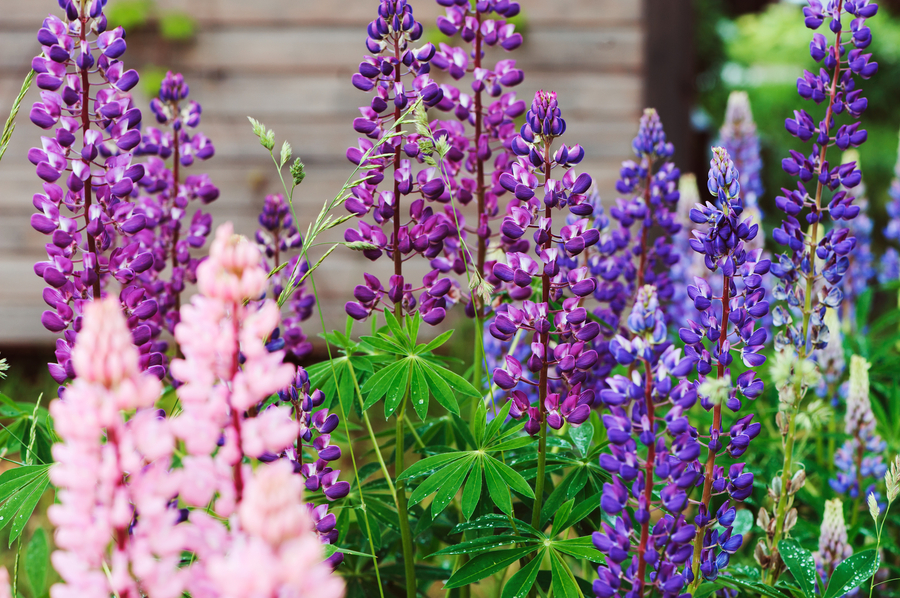
These flowers attract pollinators and other beneficial insects. Its unique flowers that start with an L add drama to the garden. To encourage a long blooming season, deadheading is recommended. Lupine can self-seed or be propagated to create more plants.
- Type: Herbaceous perennial
- Water: Average
- Bloom Color: All colors
- Hardiness Zone(s): 4 to 8
- Bloom Time: Summer
- Mature Height (feet): 3 to 4
- Exposure: Full sun
- Uses: Borders and cottage gardens
Frequently Asked Questions (FAQ) About Flowers that Start with an L
What are the names of popular flowers that start with L?
The most popular flowers that start with L are lady’s mantle, lily of the valley, lantana, lupine, lavender, lobelia, and lilies.
Queen Elizabeth’s favorite flower was lily of the valley.
What are some pink flowers that start with L?
Lilac, lenten rose, and love-in-a-mist are examples of pink flowers that start with an L.
What are some purple flowers that start with L?
Ladybells, lobelia, and love-lies-bleeding are all purple. Lilac and lavender are both purple-color names and purple flowers that start with L.
How many flowers that start with L are white?
The white flowers on this list include lady’s tresses, the licorice plant, lily-of-the-valley, and love-in-a-mist.
Image credit: Depositphotos & Wikimedia
